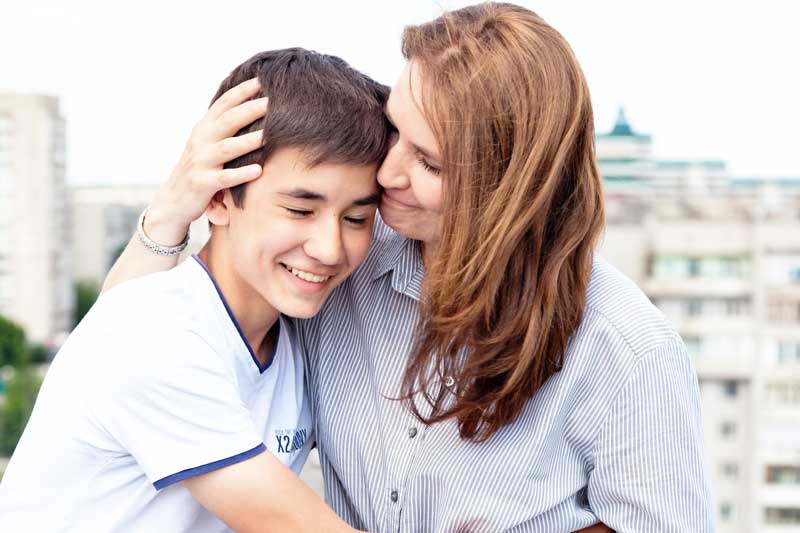Bridging with Biological Families
The primary goal of foster care is to provide a nurturing home for children while their biological families develop and enhance the skills needed to get their children safely home. These skills will also sustain their family long after reunification! Foster parents don’t just foster children, they foster biological families, too, and offer support and encouragement to parents and children as they become healthy and whole again.
Family Meetings
Family meetings will be scheduled throughout the case to facilitate planning, team-decision making, and engaging the family of the child in custody.
A family meeting includes but is not limited to: the birth parents, caregivers, the child(ren), relatives, family friends, child welfare specialists, service providers, court appointed special advocates (CASA)- when applicable, tribal representatives- when applicable, community group members, and other appropriate community partners when appropriate.
Family Time Best Practices
Family time is a right of the child. Denial of family time, sibling contact, or the exchange of letters and phone calls is not used to reward or punish the child or family.

Regular contact with their birth family gives the child(ren) several important messages:
- The child(ren) can see that the parent(s) care enough to visit, and the child(ren) can see that all adults—birth family, foster family and social worker are working together
- The child(ren) see for themselves how much progress their parent(s) are making toward getting them home. (Research has shown that consistent visits between child(ren) and birth family is the strongest indicator of family reunification)
- If the children are allowed to have contact and express all their upset feelings, they are less likely to take out or “displace” these feelings on the foster family.
Contact with their children is crucial for parents working to have their children return home. Contact and frequent parent-child interaction generates hope and allows families to build on existing strengths, and supports the development of the child-parent bond. Family time provides a place where parents can work on behaviors that caused children to be unsafe. The intent is to create an opportunity for children and their parents to be together in an environment that stimulates love and positive interaction. Family time has to be a teaching environment where the parents can learn to parent in ways that make the child safe.
Contact between child(ren) and birth family also helps the foster family. The foster family by getting to the know the birth family, can better understand the child(ren’s) behavior and understand the love that exists between child and parent. Children who do not see their family often lose hope and do not understand what is happening to them.
Contact between the birth family and child(ren) also helps the Social Worker. Because family time is a primary predictor of family reunification, it is the main tool used by the social worker to assess:
- How responsible and consistent the parent is
- The quality of the relationship between the parent and the child(ren)
- How much the birth family is learning from the parenting skills modeled by the foster family
- How much progress is being made toward changing the behaviors that caused the children to be unsafe or at risk of future harm
There is an expectation that the resource family will support and mentor with the birth family.
Coordination of Family Time
Some of the issues that should be explored prior to family time include:
- What is the best time for family time? For the parent? For the child? For the foster family?
- If the foster family has been given approval to arrange for family time, the Social worker should be notified as soon as the family time is scheduled
- Does the parent have/need transportation?
- Where would the parents/child feel most comfortable visiting?
- Ask the parent to plan a specific activity for the family time by posing the question “What are the things that your children like to do…could you bring along a game?”
- Does the family time plan actually support changes in behaviors or conditions that caused the children to be unsafe or at risk of future harm?
- Does the environment allow for a “natural parent-child interaction?”
- Who else should be at the family time? Pose the question “Who is it important for your child to stay connected to?”

All parties should know what the procedures are if family time is canceled—under what conditions family time is canceled, how much notice, and who will contact whom. Because of the importance of family time to the child, every effort should be made by all parties to follow through with the plans.
Best Practice in Family Time: Preparing Foster Families
The foster family should have a clear understanding of the family time arrangements. They may have several children in care, and coordinating activities can be a challenge.
The foster family should be prepared for the child(ren’s) reaction both before and after family time. The foster family also needs to be prepared for their own feelings and reactions:
- When parents don’t show up for family time and children are continually disappointed, foster families may feel angry and will need to process these feelings.
- When family time goes well—and patterns suggest that the behaviors that caused the child to be unsafe or at risk of future harm may have been resolved, the foster family can be saddened, as it may signal that the time is approaching for the child(ren) to return home.
- Foster families need to have somewhere to go to discuss their own grief and loss issues. Please reach out to your resource worker for information on grief and loss.
Best Practice in Family Time: Preparing the Children
The foster family and the child’s worker can help with preparing the child(ren) for family time.
The child(ren) should have a clear understanding of family time arrangements. Too often children are picked up and carried to and from family time with little idea of what is going on, or is going to happen. The child should have as much information as possible about the visit ahead of time when appropriate.
The child(ren) should be prepared for the parent’s reaction. That is, if parents frequently fail to show up for family time, this needs to be discussed with the child(ren). If a parent is likely to get very emotional, this too should be discussed with the child(ren).

The child should be prepared for his or her own feelings and reactions. Seeing the parents may bring an overwhelming sense of guilt in a child who has made a seemingly smooth adjustment into the foster family. A child who has not seemed to miss his or her parents may suddenly be overcome with grief at having to leave them. Emotions are complicated and unpredictable. We need to help children and youth understand that the family time may bring up a range of feelings (rather than to identify one possibility), and they need to reassured that this is alright.
If the child has safety or protection concerns, he or she needs to be assured that a social worker or foster family will be there to help make sure everybody is safe.
Best Practice in Family Time: Preparing Siblings
Depending on the circumstances, siblings have a varying reaction to seeing their brother or sister following placement. Often the events leading to placement have been traumatic.
Siblings who remained with the birth family may feel angry with the child in placement. They may feel the child has abandoned the family or revealed a family secret(s), or the sibling in care may feel that he or she has been abandoned.
Children placed with different foster families may be curious as to the reasons why. The social worker may need to talk with siblings before the family time to help them understand the situation.
Each sibling needs to be prepared for his or her own emotional response to seeing brothers or sisters, and be prepared to deal with how the brother or sister responds.
Best Practice in Family Time: Preparing the Birth Family
Social workers have primary responsibility for preparing the birth family.
The birth family should have a clear understanding of the family time arrangement and it should be written in the family’s service plan.
The birth family should be prepared for possible reactions by the child, according to the circumstance and development of the child.
For example, an 11 month old baby may cling to the foster parent if he or she has not seen their parents for a period of time. This could be very painful for a parent who has not been prepared for such a reaction, and could potentially cause unnecessary anger toward the foster family
The birth family should be assisted in planning appropriate activities for family time. This is where the foster family can be very helpful.
Family time is NOT a natural situation, particularly if they are held in the office. The family time should be nurturing and pleasant for the child.
The foster family and or the social worker and birth family can discuss games, artwork or other kinds of play. This family time should include a meal or snack to allow the birth family to provide nurturing.
The birth family should discuss how they will say good bye to the child(ren). Providing closure for the family time is important for the child(ren) and birth family.
